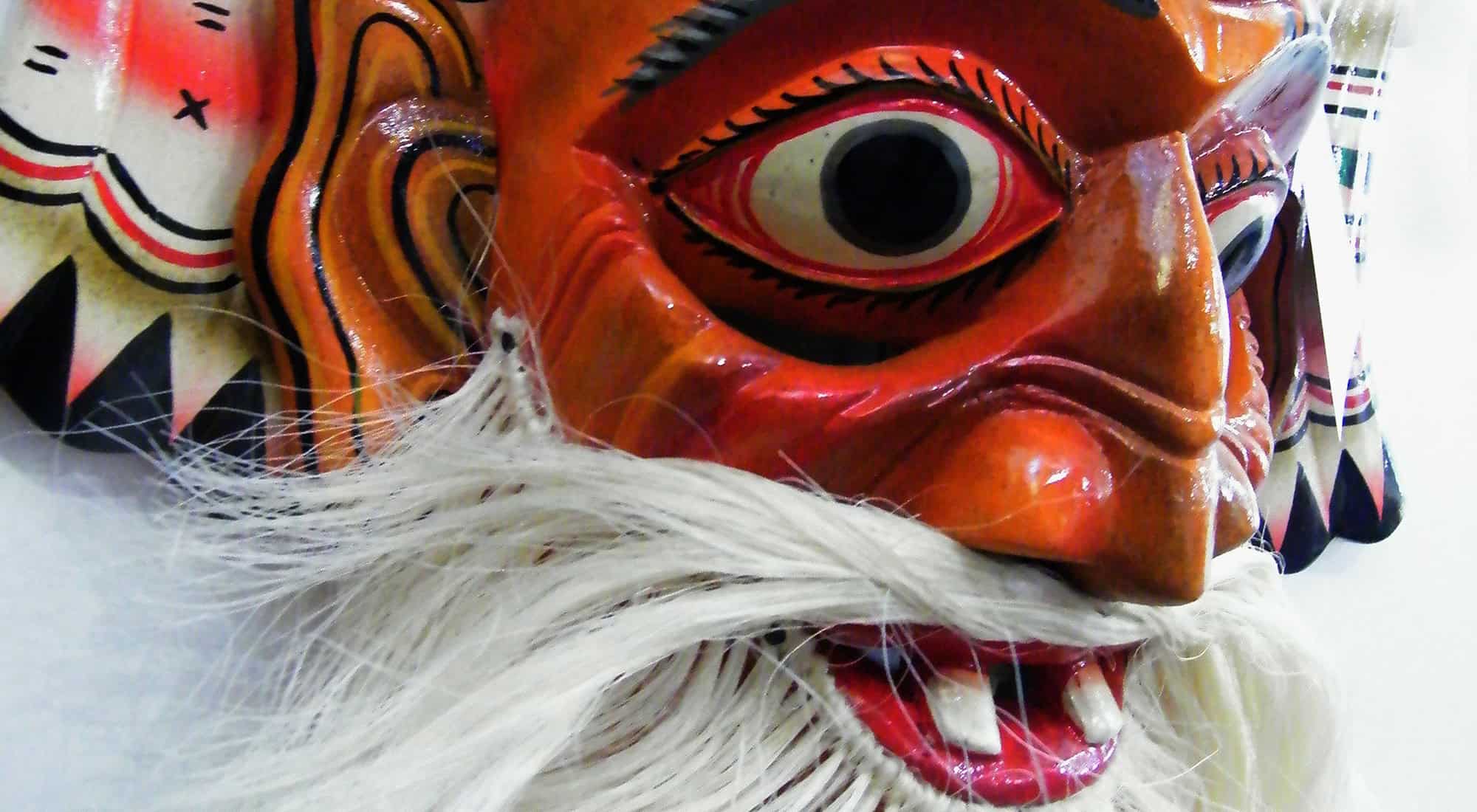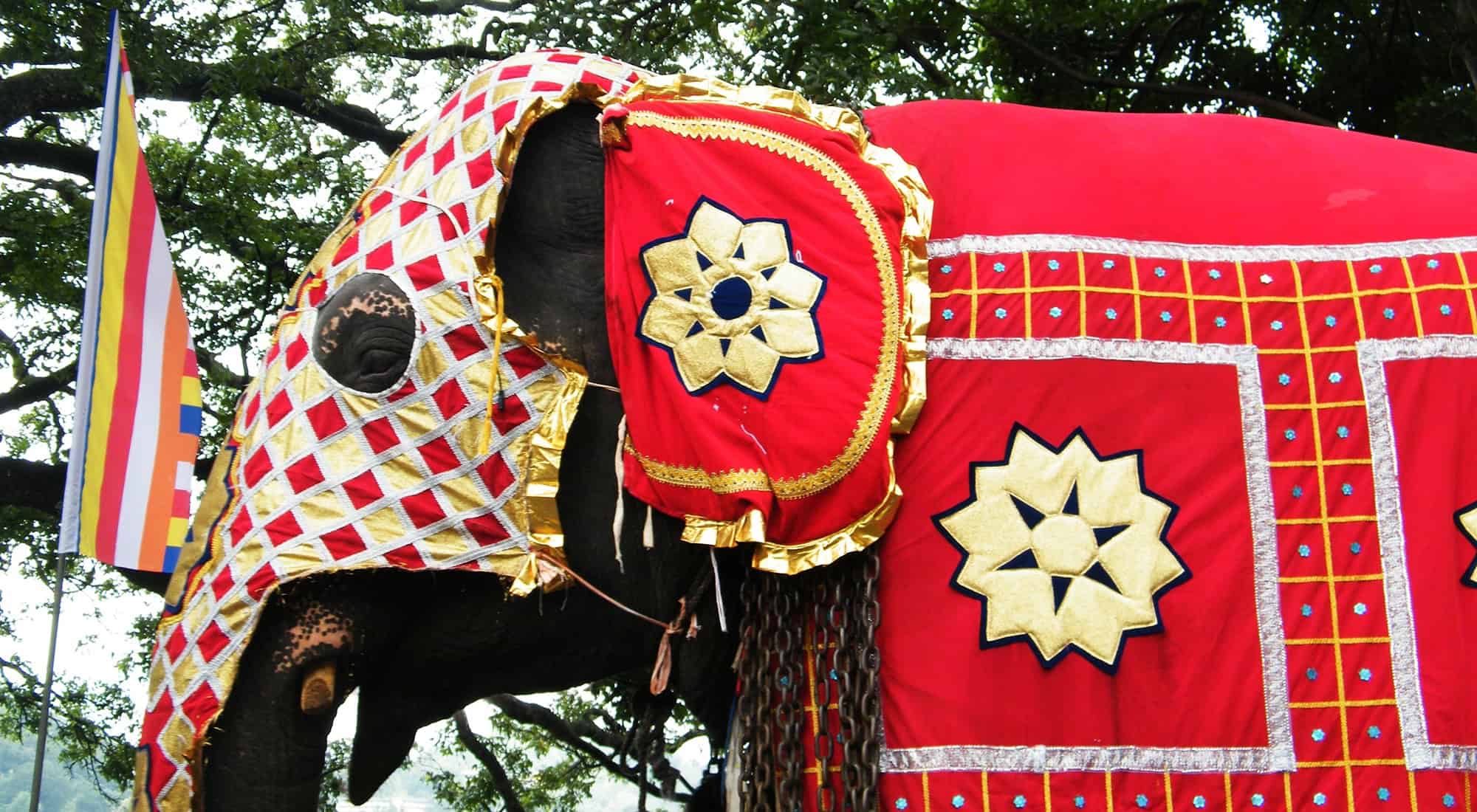The Devil Dance evolved from the rural people’s need to appease malevolent forces in nature and seek blessing from good spirits when there was an evil spirit to be exorcized, such as a sickness to be cured.
It takes the form of a ritual dance, full of high drama, with a sorcerer ‘priest’ and an altar. As evening approaches, the circular arena in the open air is lit by torches, and masked dancers appear to the beating of drums and chanting. During the exorcism ritual, which lasts all night, the ‘priest’ casts the evil spirit out of the sick.
There are 18 demons associated with afflictions for which different fearsome sanni masks are worn. There is an element of awe and grotesqueness about the whole ritual, which has a serious purpose. The dances are, therefore, not on offer as ‘performances’.
The Kolam Dance has its origins in folk theatre. The story tells of a queen, who, while expecting a child, had a deep craving to see a masked dance. This was satisfied by the Carpenter of the Gods, Visvakarma, who invented the dances. They tell stories and again make full use of a wonderful variety of masks (often giant in size) representing imaginary characters from folk tales, Buddhist jatakas, gods and devils, as well as well-known members of the royal court and more mundane figures from day-to-day life. Animals (lions, bears) too, feature as playful characters.
This form of folk dance resembles the more serious Devil Dance in some ways – it is again performed during the night and in a similar circular, torch-lit, open-air ‘stage’ (originally kolam was performed for several nights during New Year festivities). In spite of a serious or moral undertone, a sprinkling of cartoon characters is introduced to provide comic relief. The clever play on words can only be really appreciated by a Sinhalese speaker.










